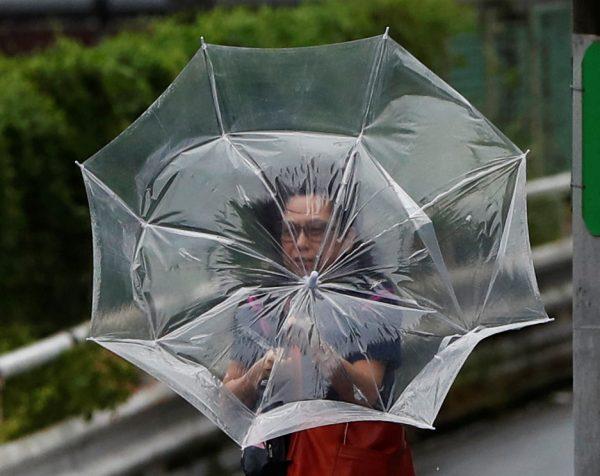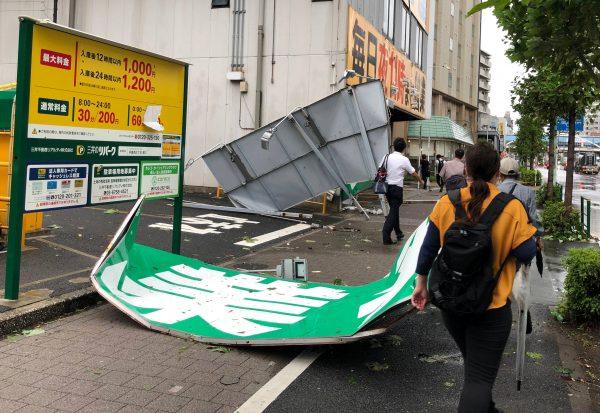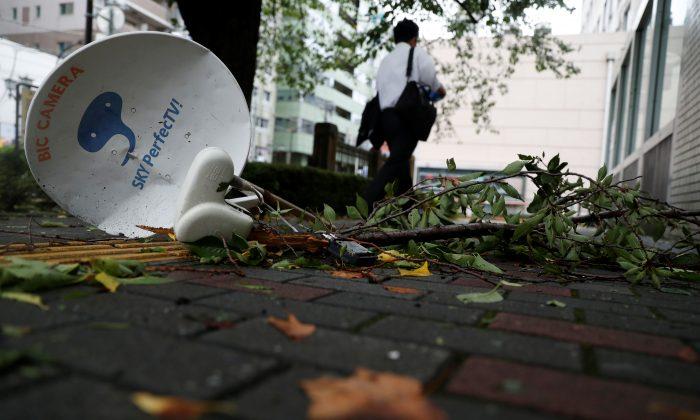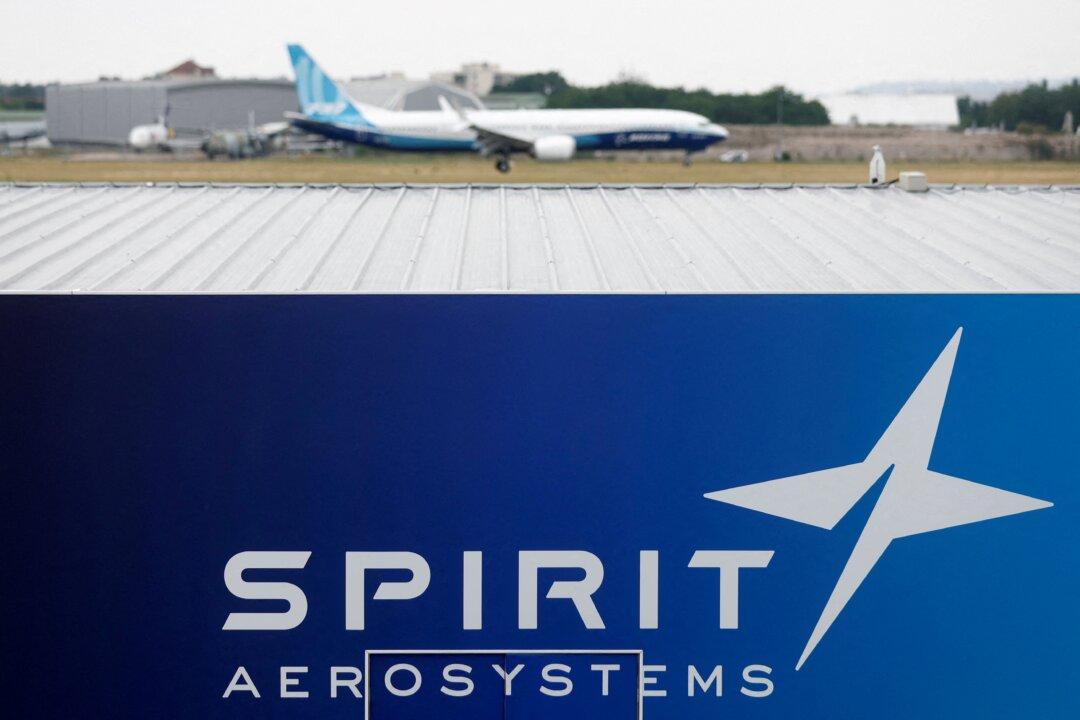TOKYO—One of the strongest typhoons to hit the Japanese capital in recent years made landfall just east of Tokyo on Monday with record-breaking winds, stinging rain and sending some rivers close to the top of their banks before heading out to sea.
More than 130 flights were canceled and scores of train lines were closed for hours, snarling the morning commute for millions in a greater Tokyo area that has a population of some 36 million. Authorities warned it was dangerous to venture outside.
Typhoon Faxai, a Laotian woman’s name, slammed ashore in the city of Chiba, just east of Tokyo, a little before dawn, bringing with it wind gusts of 128 mph (207 kmh) in Chiba, the strongest ever recorded there, national broadcaster NHK said.

There were no immediate reports of deaths and only one serious injury, a woman in her 20s who had to be rescued from her house after it was partly crushed when a metal pole from a golf driving range fell on it.
“There was a huge grinding noise, I couldn’t figure out what it was. Then I looked out the window,” a neighbor told NHK.
Some minor landslides occurred and a bridge was washed away, while as many as 930,000 houses lost power at one point, NHK said, including the entire city of Kamogawa.
“I’ve never seen a situation like this, the whole city without power,” an official told NHK.
Wind Shakes Buildings
Around four to five typhoons make landfall in Japan every year, but it is unusual for them to do so near Tokyo. NHK said Faxai was the strongest storm in the Tokyo area in several years.Winds were occasionally strong enough to shake street signs and buildings in the neighboring city of Ichikawa early on Monday morning, while biting rain fell. Streets normally busy with commuters walking or bicycling to the train station were deserted.
Metal signs were torn from the sides of buildings, trucks overturned, the metal roof of a gas station torn off and glass display cases destroyed, scattering sidewalks with broken glass. Twenty-four hour fast food restaurants in central Tokyo closed, protecting their windows with plywood.

Trees were uprooted throughout the metropolitan area, some falling on train tracks to further snarl transportation.
Some 2,000 people were ordered to evacuate because of the danger of landslides, NHK said, but there were no immediate reports of major damage.
Parts of the Tokaido Shinkansen line were briefly halted but service resumed after several hours. It took hours for other lines to resume, packing stations with impatient commuters fanning themselves in the humid air.
Temperatures were set to shoot up to unseasonably hot levels in the wake of the storm, with 36 degrees Celsius (96.8 Fahrenheit) predicted in Tokyo, prompting authorities to warn of the danger of heatstroke.






Friends Read Free